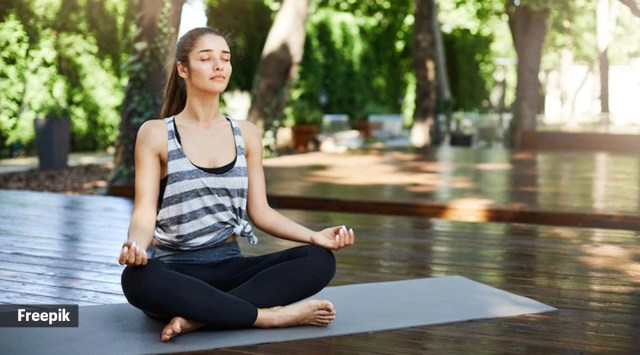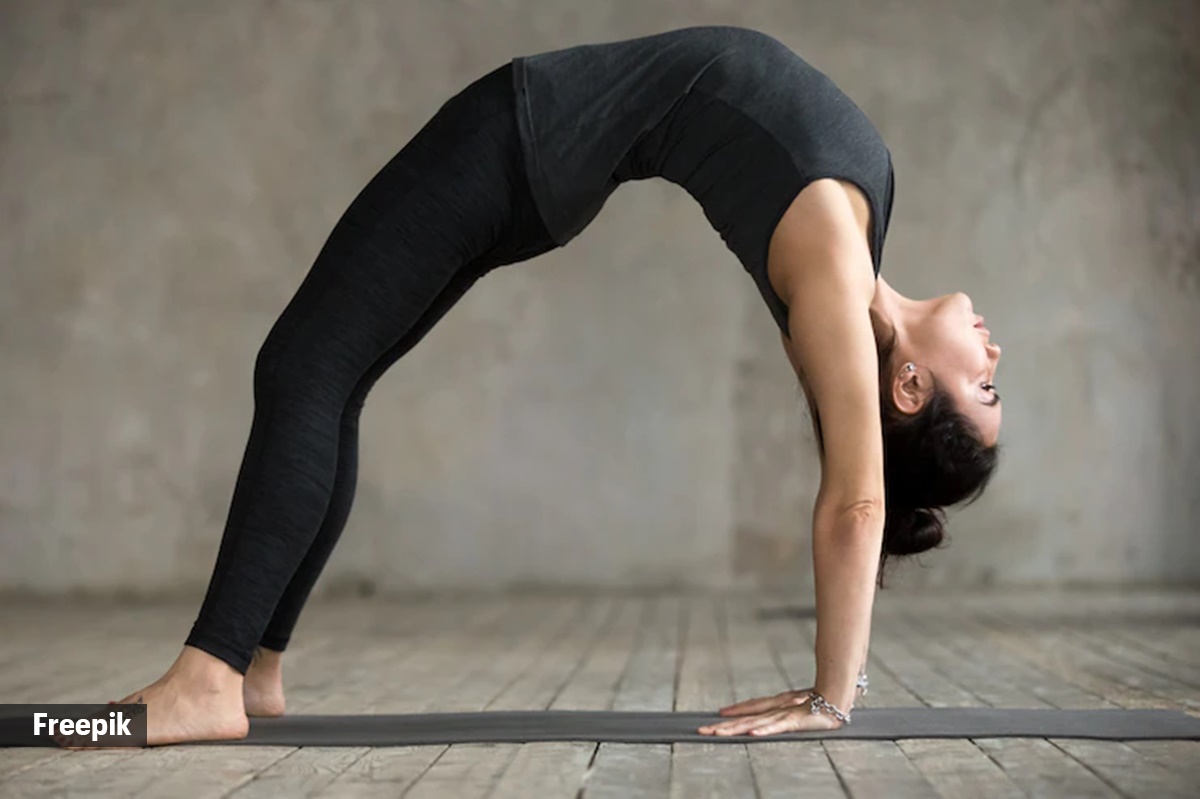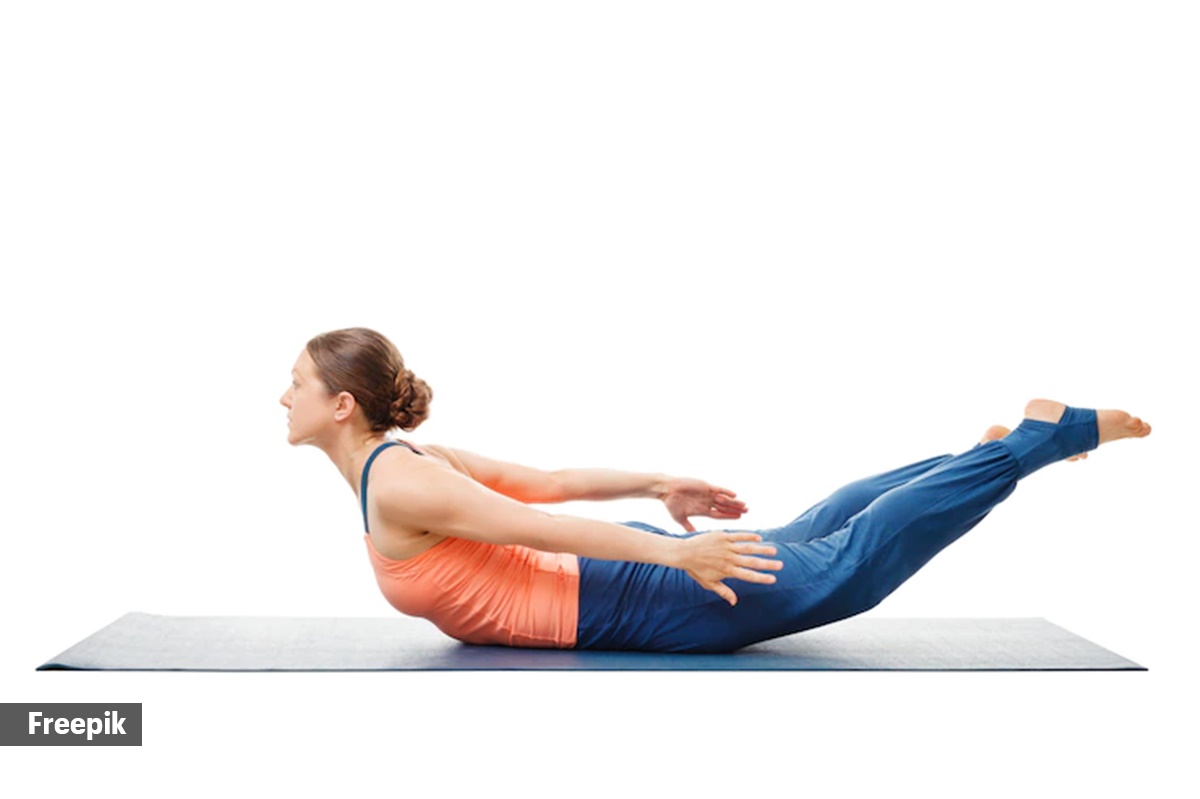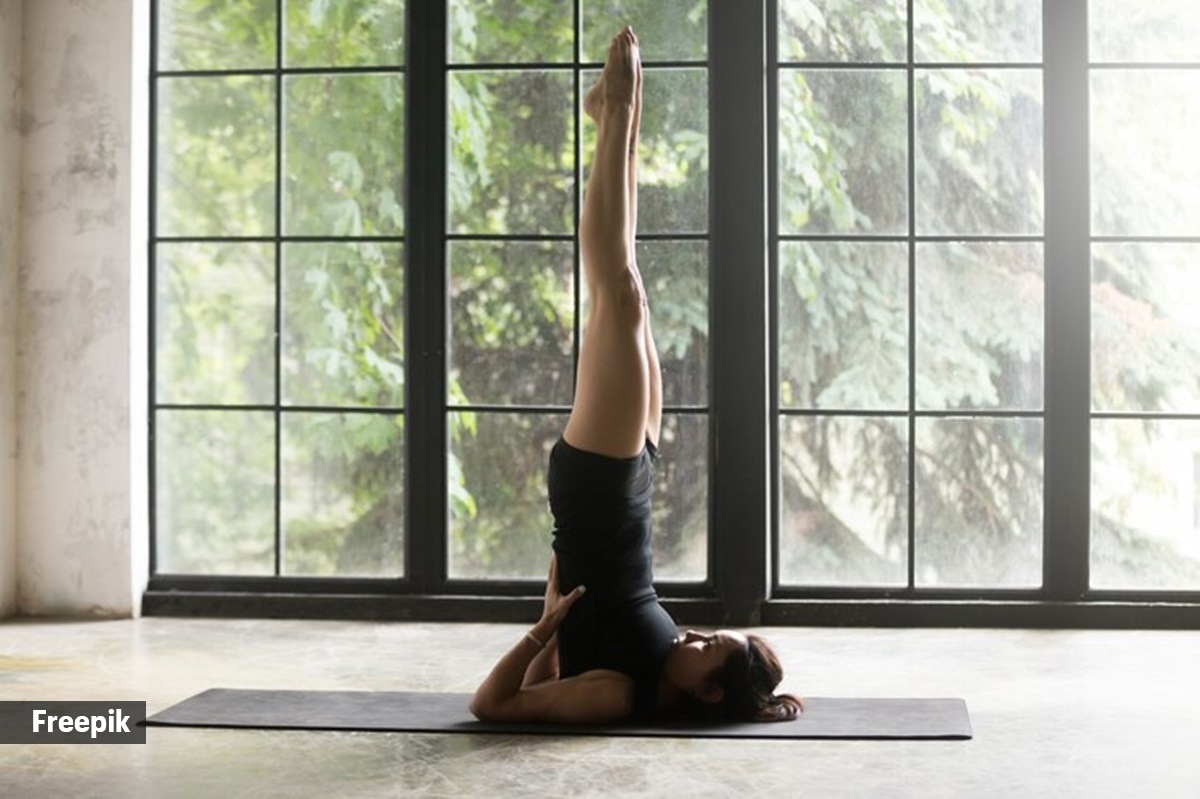📣 For more lifestyle news, click here to join our WhatsApp Channel and also follow us on Instagram
Three yoga asanas to manage high cholesterol levels
Through an Instagram post, Sarvesh Shashi, founder of Sarva Yoga Studios, wrote that individuals can manage cholesterol levels better and improve overall well-being by incorporating yoga into their daily routine.
 Studies have shown that yoga has many benefits, such as managing insomnia, anxiety, high blood sugar, high blood pressure and osteoarthritis. (Source: Freepik)
Studies have shown that yoga has many benefits, such as managing insomnia, anxiety, high blood sugar, high blood pressure and osteoarthritis. (Source: Freepik)Cholesterol helps build healthy cells in the body. However, much like everything else, an excess of cholesterol can be extremely harmful to health as it can raise the risk of heart disease. That is because it causes fatty deposits to develop in the blood vessels which, on growing, make it tough for the blood to flow through the arteries. It can also form a clot, which can lead to a heart attack or stroke.
High cholesterol can be hereditary, but oftentimes it is because of an unhealthy lifestyle, making it treatable. Regular exercise and a healthy diet can easily reduce high cholesterol. “Yoga is one form of exercise that can aid the process. Frequent yoga practice, including pranayama, meditation, and a healthy diet help to lower LDL (bad cholesterol) and boost HDL (good cholesterol). Yoga decreases cholesterol by reducing stress hormones, and encourages weight loss by stimulating the endocrine system,” Himalayan Siddhaa Akshar, Founder, Akshar Yoga Institutions, told indianexpress.com, adding that yoga is also known to increase endurance, allowing you to combat a sedentary lifestyle.
Additionally, he shared that studies have shown to reiterate the many benefits of yoga, such as managing insomnia, anxiety, high blood sugar, high blood pressure, and osteoarthritis.
Sarvesh Shashi, founder of Sarva Yoga Studios, also took to Instagram and shared that individuals can manage cholesterol levels better and improve overall well-being by incorporating yoga into their daily routine, as he listed three asanas one can begin with.
View this post on Instagram
Chakrasana: Also known as the Wheel Pose, Chakrasana is a full-body stimulator.
There are two ways to perform the pose, depending on the level of difficulty:
*Beginners, start with lying on your back with your knees bent on the floor. Place your hands near your ears. Then, lift your entire body by putting pressure on your palms and feet.
*Advanced practitioners can attain the posture by arching their back, opening the chest and reaching the floor with their palms.
 This pose stretches the whole body including the spine, neck, abdomen, chest, arms and legs. (Source: Freepik)
This pose stretches the whole body including the spine, neck, abdomen, chest, arms and legs. (Source: Freepik)
This pose stretches the whole body including the spine, neck, abdomen, chest, arms and legs. It also betters your posture, improves spine flexibility and strength. However, Akshar recommended thoroughly warming up the body before practicing the asana. “Those who have an injury in the wrist or back, along with pregnant women should avoid attempting the asana,” he said.
Shalabhasana (Locust pose)
 The pose looks like a locust resting on the field because of the extended torso and stretched hands. (Source: Freepik)
The pose looks like a locust resting on the field because of the extended torso and stretched hands. (Source: Freepik)
It is a back-bending asana, which helps relieve back pain and increase flexibility. The pose looks like a locust resting on the field because of the extended torso and stretched hands.
The spine gets a good stretch in this asana, however, to lift the hands and legs together, one needs to develop upper and middle back strength. Thus, Akshar advised people with a recent or chronic injury to the back, arms or shoulders to avoid the asana, as well as if you’re pregnant, menstruating, or have had a recent abdominal surgery.
Sarvangasana (Shoulder stand)
 The whole body rests on the shoulders, making it the primary limb in the asana. (Source: Freepik)
The whole body rests on the shoulders, making it the primary limb in the asana. (Source: Freepik)
In this pose, the back is an inverted position and is supported by the hands and shoulders. The whole-body rests on the shoulders, making it the primary limb in the asana. Since pressure also comes on the neck, it stimulates the thyroid gland. The thyroid gland helps in boosting metabolism, thus promoting weight loss, which in turn helps combating high cholesterol.
However, Akshar suggested practitioners with wrist, neck or shoulder issues to refrain from performing this asana, as well as during menstruation or pregnancy. At the same time, those suffering from enlarged thyroid, liver or spleen, cervical spondylitis, slipped disc and high blood pressure or other heart ailments must avoid it altogether.
📣 For more lifestyle news, follow us on Instagram | Twitter | Facebook and don’t miss out on the latest updates!
📣 For more lifestyle news, click here to join our WhatsApp Channel and also follow us on Instagram

Photos



- 01
- 02
- 03
- 04
- 05






















